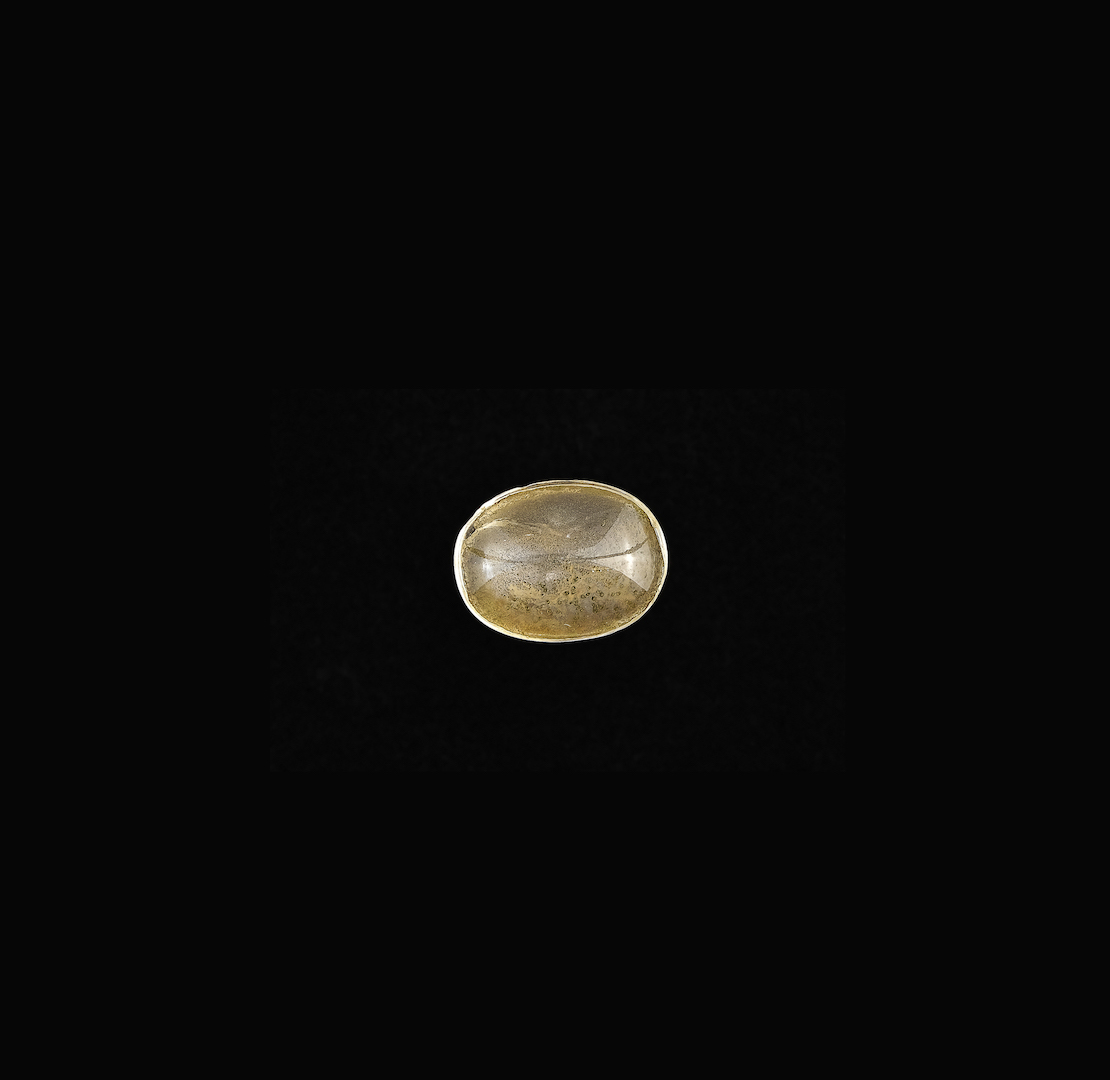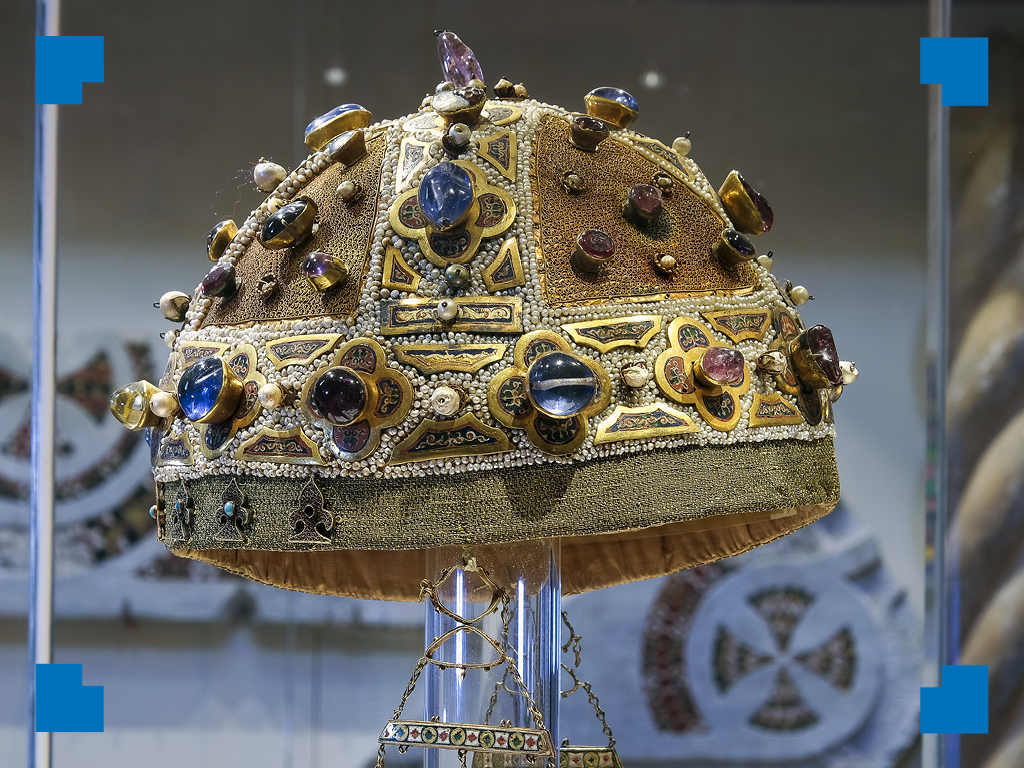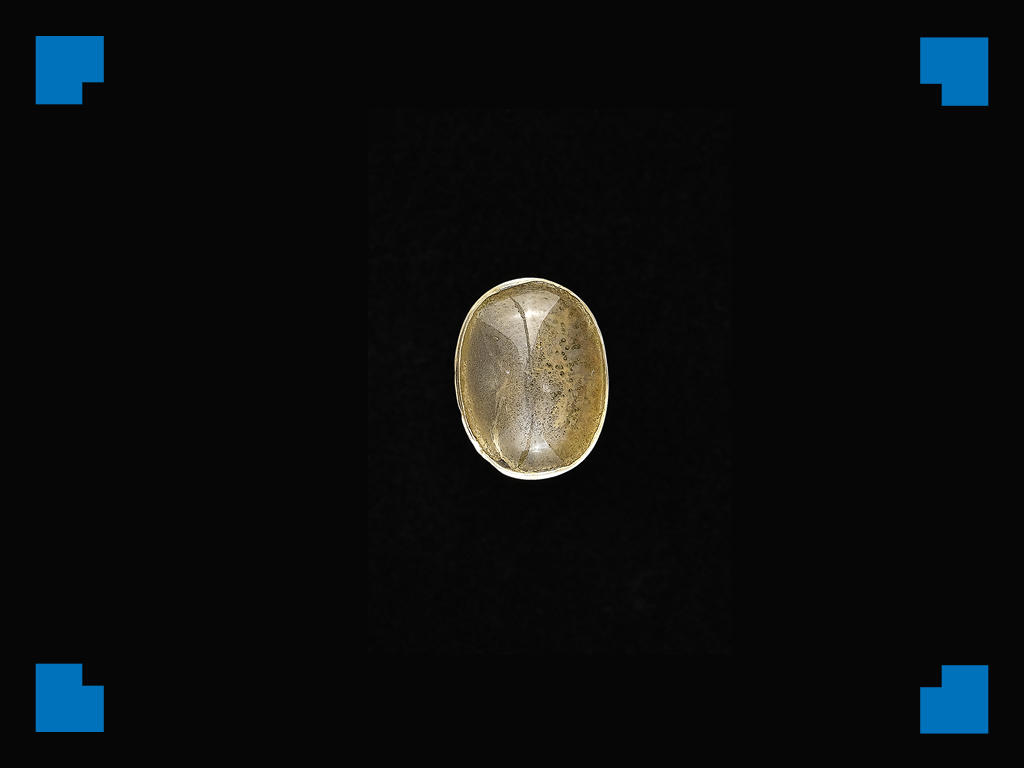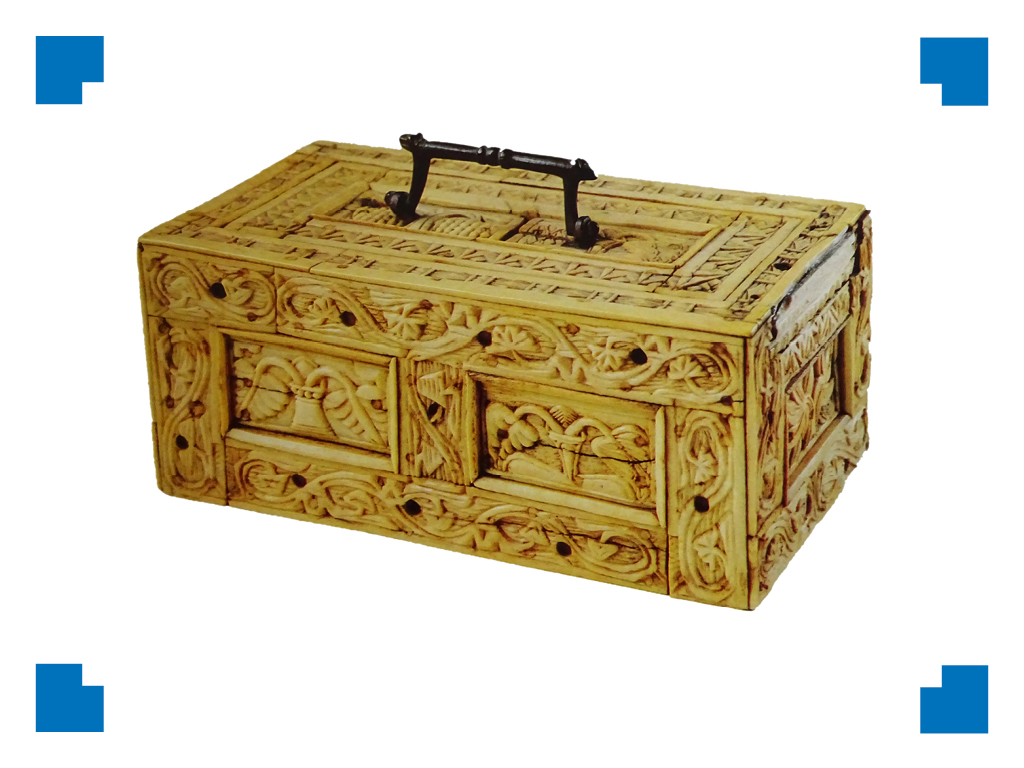
5. Cabochon quartz from the mantle fibula of the King of Sicily and Emperor Frederick II
Sicilian craftsmen, before 1250
Cabochon quartz from the mantle fibula of the King of Sicily and Emperor Frederick II
(2×1 cm)
Palermo, Treasure of the Cathedral, from the Emperor’s sarcophagus
The Emperor and King of Sicily Frederick II died in 1250 in Apulia and his body was carried to Palermo, where it still rests in a porphyry sarcophagus, originally made for his maternal grandfather Roger II, first King of Sicily, father of Constance of Hauteville.
More than one hundred years after the last opening, in 1999, during research inside the sarcophagus, a fragment was taken in which a transparent gemstone and remains of beads were set.
After being cleaned, the stone – now exhibited to the public for the first time – was identified as a cabochon-cut quartz. It was probably set in gold and sewn into the center of the mantle fibula, with an outline of pearls, as displayed in the drawing made during the 1781 opening (cat. 6).
The mineralogical study is still in progress. If it were rock crystal (hyaline quartz), the stone might have been created by German or Venetian craftsmen, and then set on purpose by the royal manufacturers of Palermo.
People in the Middle Ages, including Frederick II of Swabia, attributed to this stone magical, hypnotic, divinatory and therapeutic powers. At the time, crystals were usually employed to ward off demons and diseases, to purify and to instill strength and energy.


